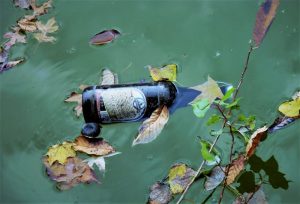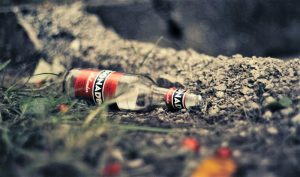Water pollution
In our world two-thirds of the Earth's surface is covered by water; and less than one-third is occupied by land. As the Earth's population continues to grow, people are putting increasing pressure on the planet's water resources. In a sense, our oceans, rivers and other inland waters are being replaced by many human activities causing the waters to reduce in quality. Poorer water quality can lead to water pollution. As industrialization has spread throughout the world, the problem of pollution has spread along with it. When the Earth's population was much smaller, no one believed that pollution could present a serious problem. Today, with about 7 billion people on the planet, it has become clear that there are limits and pollution is a sign that humans have exceeded those limits.

Related topics
Environmental pollution, air pollution, atmospheric pollution, soil pollution, visual pollution, potable water, water resources, fresh water
What is water pollution?
It is any type of chemical, physical or biological change in the quality of the water which results in a negative effect on any living being, whether man or animal that consumes it.
Causes of water pollution
In general, water pollution occurs as a result of human activities. Different agents that man uses have the capacity to contaminate water. Water pollution is produced mainly by the types of discharges: process waters that are the result of production and therefore depend on industrial activity; fecal waters that include domestic wastewater and the latter by raw water, which are the waters that exist before they are transformed into drinking water. When water services are mismanaged, the population is put at health risk. Another cause of water pollution is deforestation as this causes areas to become very vulnerable.
Sources of water pollution
Causes can be divided into point sources and diffuse sources. Thus, point sources are those that discharge pollutants directly into specific areas through sewers or pipelines, e.g., factories that dump their wastes, wastewater treatment plants, oil wells and underground mines. Diffuse pollution is generated in a location and transported through rivers and groundwater. This type of pollution is very difficult to control because what causes it cannot be controlled.
Effects of water pollution
The effects of this type of pollution include those that occur in humans that directly affect health, those that harm animals and those that produce great effects on the environment in general. Human health problems can even lead to birth defects, damage to the nervous system and cancer. The effects on fauna and flora are immense. Animals can become ill and some of them are already in danger of extinction. These effects of water pollution do not only occur in developed countries, but it is a global problem. Industrialization, the misuse of waste in factories, and the irresponsibility of the human being cause water to become increasingly polluted. Biodiversity and ecosystems suffer, food chains are broken, and disease-carrying insects find in polluted water the ideal place to survive.
Consequences
Some of the consequences arising from water pollution are as follows:
- Marine life and different aquatic ecosystems disappear due to the toxicity of products and waste from factories, and even human beings, such as detergents.
- Diseases occur in humans, such as dengue, cholera and dysentery.
- The different species of flora and fauna suffer a weakening of their systems limiting their ability to survive.
- It converts drinking water into water that is unfit for human consumption.
- Poisoning of species and fauna.
Prevention
Some methods of prevention to protect water range from a good choice when choosing a detergent to how we dispose of waste that we don’t need. Saving water is very important in order to maintain adequate levels, not to throw garbage into rivers and seas, to avoid eliminating waste from factories, cars and motors in rivers or water sources.
Types
The types of water pollution can be, for example: oil spills in the oceans, surface water pollution, groundwater pollution, pollution by microorganisms such as bacteria and protozoa, and chemical pollution.
Examples of water pollution
The most common examples are dumping garbage into rivers, poorly treated wastewater, microbial contamination, mining, oil spills, use of chemicals that are not properly disposed of, dumping garbage into seas and rivers.
How to cite this article?
Briceño V., Gabriela. (2019). Water pollution. Recovered on 3 January, 2025, de Euston96: https://www.euston96.com/en/water-pollution/









